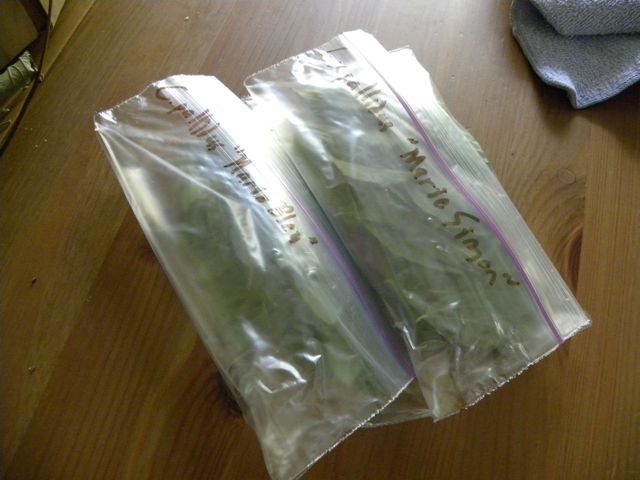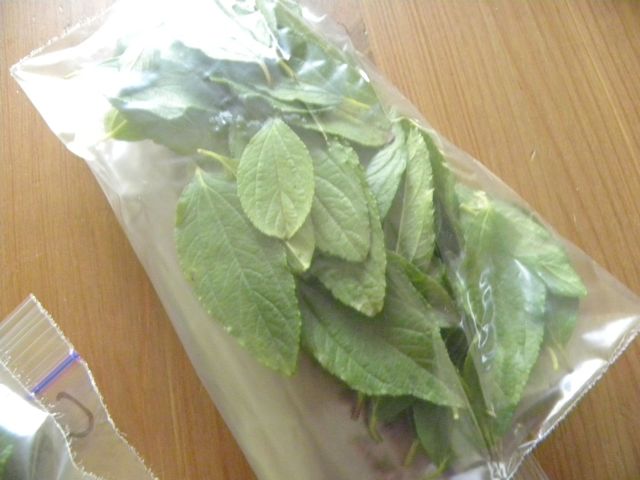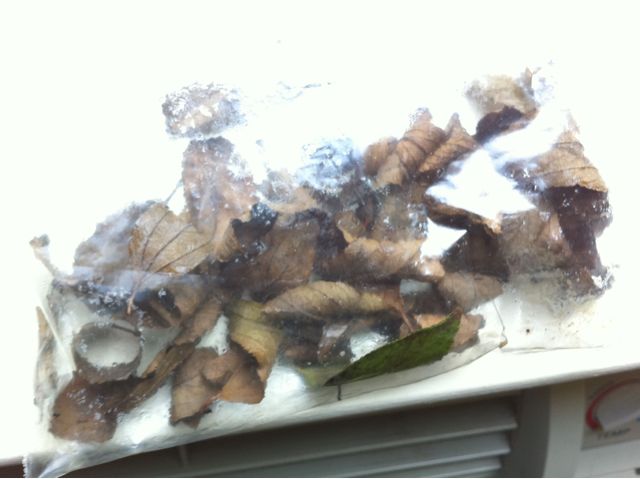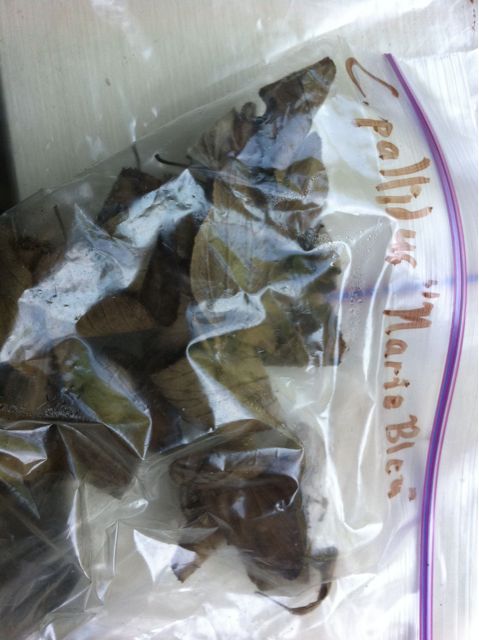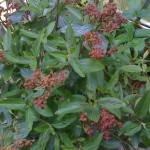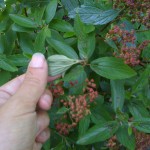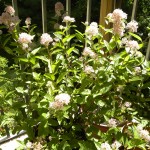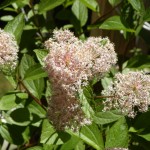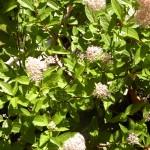A few weeks back when my wife, and our two daughters and I went to the Rutgers Gardens Farm Market we came upon a very familiar looking plant, one that I’ve been looking for for the past 5 years:
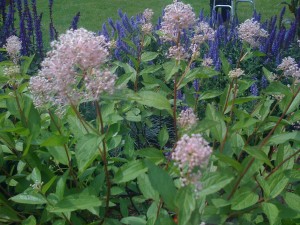
What you’re looking at is Ceanothus americanus x pallidus a hybrid between Ceanothus americanus (Jersey Tea!) and Ceanothus pallidus (a hearty cousin). It looks and behaves almost identically to C. americanus except that its flowers are pink, and its stems redder.
C. americanus has all but died out in its namesake state, as most of its natural habitats have become parking lots, condo developments, or under high-tension power lines, effectively sterilizing them.
It really is a beautiful shrub with gorgeous flower clusters that smell rather nice and attract all sorts of insects.
However, the property that I was after from this plant was its history as a tea substitute during the Revolutionary and Civil wars, and you can read all about that on my page about it here.
At this point, it was a matter of putting the historical record to the test.
I picked a bunch of leaves and dried them indoors by our air conditioning unit and brewed up a cup… Which was a bit of a disappointment. The taste was very grassy. Under it however, I could sense something flavorful, just a hint of conventional tea.
So, being undeterred, I checked my sources on it and tried drying the leaves in the shade outdoors for a while and brewed a pot from that yesterday… Another grassy cup, but not as grassy as the first try. I was making progress. Deciding to give it a rest, I went to bed.
In the morning when fixing coffee I decided to pour myself a glass of iced tea, forgetting that I had the Ceanothus in the pot… and when I took a sip I thought that my wife must have brewed some good green tea before I awoke. It tasted something similar to Sencha, until I noticed that there was a hint of the Ceanothus grassy taste still there. The flavor was certainly more along the lines of what I had been led to believe!
That must be the trick: Oxidization. Much like how traditional tea leaves are cured by oxidization (and oxidize quite easily when the leaves are crushed and the natural enzymes do their thing) I need to find a better way to oxidize the Ceanothus leaves before I brew, as it gets rid of the grassy taste and leaves the nice ceanothine and tannin flavors behind. Leaving the leaves in the pot overnight in hot water did the trick, but not optimally (as anyone who knows how tea that’s been left in the pot overnight can sometimes get a bit *too* oxidized) and the leaves themselves do not oxidize as readily as Camillia leaves when crushed and exposed to air (they’re much thinner and more papery and dehydrate in a blink).
If I can achieve that, I believe that I’ve found a perfect replacement for my green tea consumption, grown at home. 🙂
UPDATE: Just tried the Ceanothus tea in the pot right now (just before I submitted this post) and the liquor is even darker, and the grassy taste is gone. It tastes like a delicious and smooth tea! It seems like while I’m working on finding a way to oxidize the leaves *before* I brew (so I can enjoy a hot cup) that making pitchers of good-tasting iced tea (or should we call it “cea”?) will be a snap.
Peace,
-Steve

